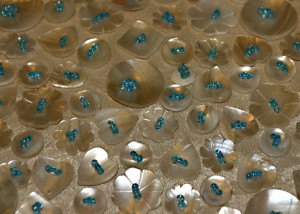
The Turquoise Bead Bracelet and Native American Jewelry
Native American jewelry is unique, and is highly regarded as a personal adornment, rather than an accessory. Whether for sales purposes, personal use or artistic use, the turquoise bead bracelet is primarily seen as a cultural icon, and is indicative of the Indigenous cultures of the United States.
Native American jewelry spans across earrings, necklaces, rings, pins, necklaces, ankle bracelets and wrist bracelets, and are created with various materials and color additives. The jewelry usually reflects the corresponding cultural aspects, and indicates the immense cultural diversity across the history of its crafters.
Many Indigenous tribes have copied or borrowed styles and designs of turquoise bead bracelets from one another, and have received different jewelry from neighboring nations and tribes. This practice continues in present day, and is seen as a cultural practice among many Native American tribes.
Different tribes still develop individual aesthetics based upon their artistic virtue and cultural traditions, and may create the turquoise bead bracelet for ceremonies, display, adornment and for sales and trade.
The Creation of The Turquoise Bead Bracelet
Most Native American jewelry is created from natural materials, and is derived from metals, vegetable fibers, hardwoods and precious gemstones. Some animal materials like bones, teeth and hide can be used, and other man-made ingredients such as quilt-work and bead-work appear in the overall style.
The turquoise bead bracelet is created by beaders, carvers, metal-smiths and lapidaries, depending on its derivatives, and often includes some sort of quilt-work or bead-work as a step of creation. The modern turquoise bead bracelet can be created from hand-quarried or processed stones, shells or computer-created steel and titanium.
The Turquoise Bead Bracelet and Antiquity
Native American bead-work flourished in the pre-Columbian era, and many turquoise bead bracelets were created from hand-dug and filled turquoise, shells and coral. The turquoise bead bracelet became a favorite, and was commonly made from carved wood, claws, teeth and animal bones. These beads could be sewn into clothing, placed upon necklaces or worn around the wrist.
Turquoise is a dominant material used by the Southwestern Native Americans, and thousands of turquoise bead bracelets were discovered in the Ancestral Pueblo excavation sites at Chaco Canyon. Some turquoise bead bracelets date back to turquoise mines, located outside of sites dating back to the Precolumbian times.
Many Ancestral Pueblo people traded turquoise bead bracelets with Mesoamericans, and some turquoise bead bracelets found in Arizona date back to 200 BCE. The turquoise bead bracelet, to this day, is a common fashion accessory for non-Native Americans, and is a recurring tribal inheritance of the original creators.
